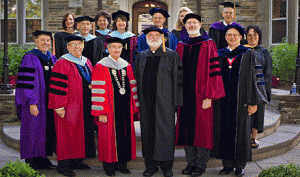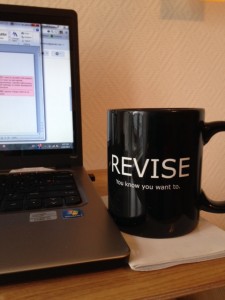I took off for MHS right away, studying 1 Samuel 1:10-19 on my iPhone while on the bus. The Maasai research group does an hour of Hebrew together, so I prepare the special vocabulary, review some strange verbs (Hithpael with a metastasis), and practice verbalizing. I arrived and checked out the books from the library that were going to be discussed.
Holter, Contextualized Old Testament Scholarship in Africa (2008) and Kinoti & Waliggo, The Bible in African Christianity (1997).
I read a couple essays in Kinoti and Waliggo and took notes, and then scanned the other articles or chapters over the morning hours. After a quick lunch in my office, we gathered at noon. We are skyping with one of the research group who will be doing a post doc (her PhD is from Germany), as she has not received her visa yet from Norway.
We got through our Hebrew (relieved that I didn’t get verse 11 which was really long) and glad we didn’t get beyond what I had reviewed. Then Knut reviewed the books. I realized again how informed and connected Knut is. He’s been doing African study since 1995 and knows so much of the history and OT researchers. In a previous year, I had a question about John Mbiti, and Knut said, I’ll send you his email address and ask him. He’s a friend and just recently sent me a newsy letter about how his family is doing. John Mbiti is an icon in African theology!
The last of the 4 hours was a discussion about my chapter 3 which had been provided earlier. I was affirmed, but also given helpful insights to improve the chapter. Here’s the dilemma. Most people don’t know about the Maasai culture and social structures, but my paper is not an anthropological study. So, I have to draw upon the “existing literature” of respected scholars to give an overview of the culture and social structures, because my research is built upon an understanding that I have of the Maasai–not a complete understanding–but enough to have a deeper and more authentic dialog. So, I need to get my readers up to speed. But it can’t be too many pages, or else, it isn’t my dissertation. So, basically, it is too long and needs to be edited. The part that I believe is least strategic for the research question was a part Knut asked me to add. So, I’ll ask about what he things about deleting this added section. It was good that I wrestled with it, but it doesn’t add much.
During the session, Anya arrived, having taken the bus from Sandnes. She hung out in my office and then we walked around downtown Stavanger. Anya thinks this is cool. I do too. There is an interesting mix of 1000 year old history, 150 year old buildings, modern buildings, and cosmopolitan life and shopping, with a picturesque waterfront with a varying display of ships. When summer tourist season is in full swing, the harbor will be filled with cruise ships and the waterfront will be filled with street-fair booths.
Anya then joined the youth of the Stavanger International Church. There are only 3 teenage young women all 13 and 14. They are going through the Youth Alpha Course. She enjoyed it, and it was good to have time with youth in English and in a youth group setting which is comfortable. The international panorama with just 7 people (a couple parents too) was stimulating–even for Anya.
While she was in the session, I was in the lobby looking at the TIME magazine to get caught up with news when my PhD student colleague, Marit, showed up. We know each other from 2012, and she is a warm and endearing woman. Most Norwegians would not be described like this, and while I have the pleasure of other colleagues at MHS who are wonderfully kind and gracious, there is something about Marit. She is a Salvation Army pastor and trained spiritual director, so there is an empathy from her soul. We had an enriching conversation, where I found out about a prison ministry that she started 2 years ago with another pastor (male), where 8 men go on retreat for 21 days to a retreat center. The men are loved and nurtured and come back transformed. They continue meeting monthly for a year. The prison staff have commented that not only are the prisoners transformed but that they start to change the ethos of their groups. Amazing. She has her 3rd retreat starting June 8, so put it in your prayers.
Anya met Marit at the end of her session, and it was great to meet a Marit. Anya chose this name for her Norwegian camp last year. Now we know that Marit means pearl.
I’m tired. I’m humbled by Hebrew. I’m challenged by the re-revision of chapter 3. My cough hasn’t totally gone away, and it seems in the evenings it rears its ugly head. Yet, I’m renewed by conversation with Marit and the lilt that returned to Anya’s step this evening.
With blessings,
Beth



